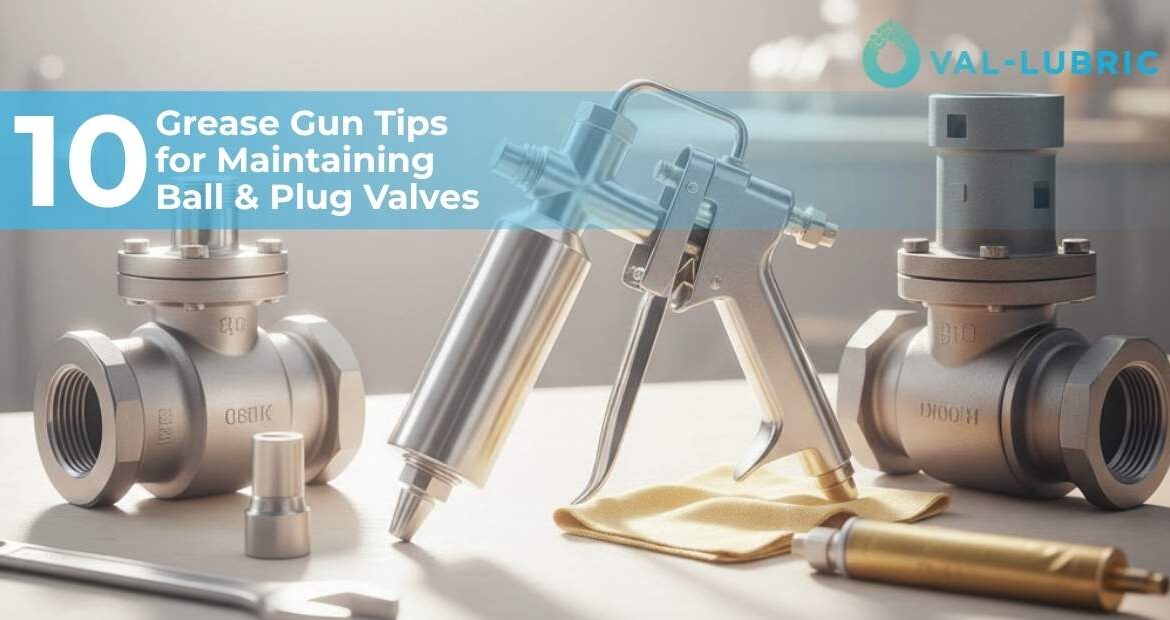Proper valve lubrication is critical to keeping your ball and plug valves performing smoothly under extreme conditions. Whether you’re working in oil and gas pipelines, refineries, or industrial plants, effective use of a high-pressure grease gun can prevent leaks, reduce wear, and extend valve life.
In this post, we’ll share 10 expert grease gun tips for valve maintenance professionals—featuring insights and tools from Val-Lubric’s Hydraulic Sealant Pump and High-Pressure Grease Guns designed for heavy-duty lubrication.
1. Choose the Right Grease Gun for the Job
Not all grease guns are equal. For ball and plug valves under high pressure, use a hydraulic grease gun rated for 10,000–15,000 PSI to ensure proper sealant delivery. Val-Lubric’s industrial-grade tools are ideal for valve lubrication in demanding conditions.
2. Use the Correct Coupler
Pair your grease gun with a button head or giant button head coupler to ensure a tight, leak-proof connection. This ensures efficient grease transfer and minimizes waste.
3. Verify Grease Compatibility
Always match your grease type to the valve manufacturer’s specifications. Using incompatible grease can lead to swelling, corrosion, or reduced sealing efficiency.
4. Clean Fittings Before Application
Before applying grease, clean the valve fittings to remove dirt or hardened residue. This prevents contaminants from entering the valve cavity.
5. Avoid Over-Lubrication
Too much grease can damage seals or restrict valve movement. Apply short, controlled strokes until resistance increases—then stop.
6. Maintain Pressure Consistency
Keep your grease gun calibrated for consistent output. Uneven pressure can result in partial lubrication or seal failure.
7. Monitor Valve Performance
Regularly operate valves after greasing to distribute lubricant evenly. Watch for signs of stiffness or leaks that might indicate internal wear.
8. Inspect Couplers and Hoses
Check for damaged hoses, worn O-rings, or leaking couplers. A faulty fitting can reduce grease delivery efficiency.
9. Store Equipment Properly
After use, clean and depressurise your grease gun. Store it in a dry, dust-free area to prevent contamination and corrosion.
10. Schedule Regular Maintenance
Set a fixed lubrication schedule based on valve type, operating conditions, and pressure rating. Document each maintenance cycle for reliability tracking.
Conclusion
A properly maintained valve system depends on precise lubrication practices. By following these 10 grease gun tips, you can improve valve performance, reduce maintenance costs, and extend component lifespan.
Explore Val-Lubric’s Hydraulic Sealant Pump and other high-pressure lubrication tools built for demanding oil & gas, marine, and industrial applications.

